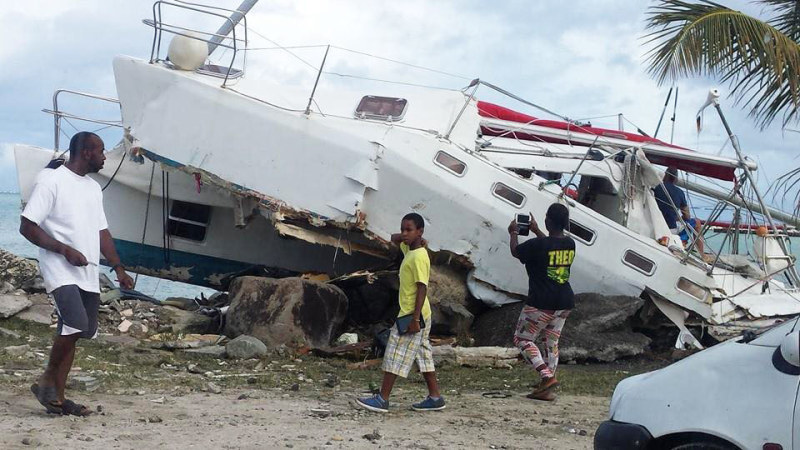
Gonzalo Hammers St. Martin and St. Barth
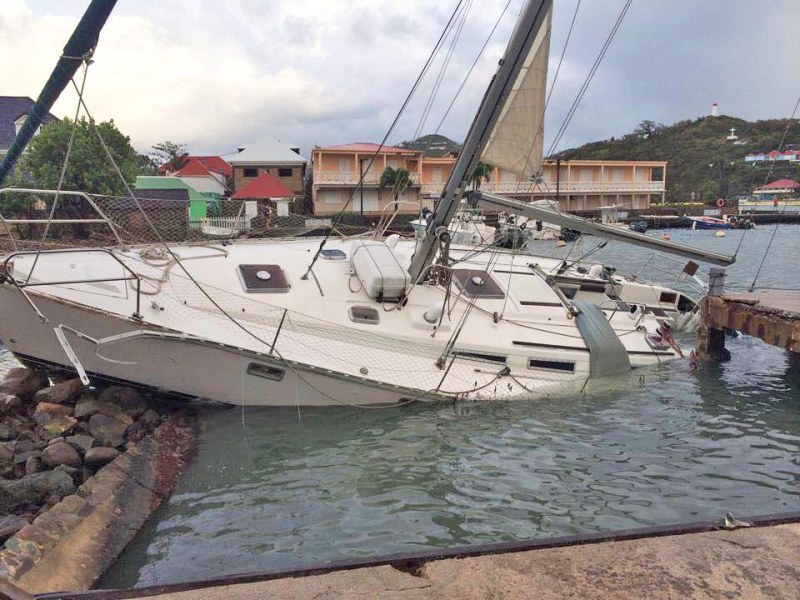
For five hours on Monday evening St. Barth and St. Martin were sucker punched by hurricane Gonzalo, which had surprised forecasters with a quick change in path and a rapid building in strength to hurricane force. Marine interests on the two islands were hit particularly hard, as were small aircraft.
The body of one 87-year-old sailor, who had lost his boat to the ferocious hurricane Luis 19 years before, was found in his current boat at Boca Marina inside St. Martin’s Lagoon. While one source says nobody has been reported missing, others are saying a number are still missing, including three in a dinghy off St. Martin, three on a boat off St. Barth, and perhaps more.
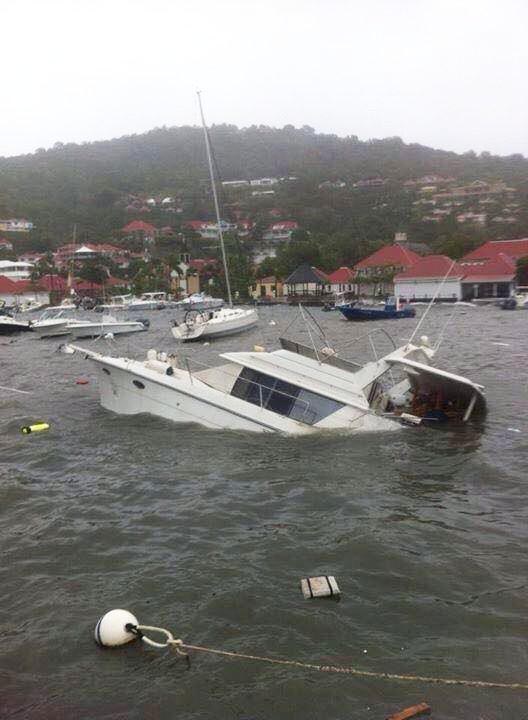
Thirty-seven boats were said to have been destroyed, most of them sunk, on St. Martin. Most were in Simpson Bay Lagoon or at Sandy Ground, Marigot Bay and Grand Case on the northwest coast, where authorities said the waves got as high as 18 feet. In addition, five boats were reportedly washed up in relatively protected Oyster Pond, and the resort bars at Orient Beach were said to be devastated.
There was an unknown amount of damage to boats in the boatyards. For example, St. Martin Shipyard, next to the airport on the Dutch side, reported significant damage to boats in their dock area. La Gamelle, the Wanderer’s scruffy but beloved Olson 30, is in that yard, but we’ve been told that she is undamaged. The pier at the Coast Guard office on the Dutch side was damaged when a boat slammed into it, and one Coast Guard vessel on a lift was also damaged.
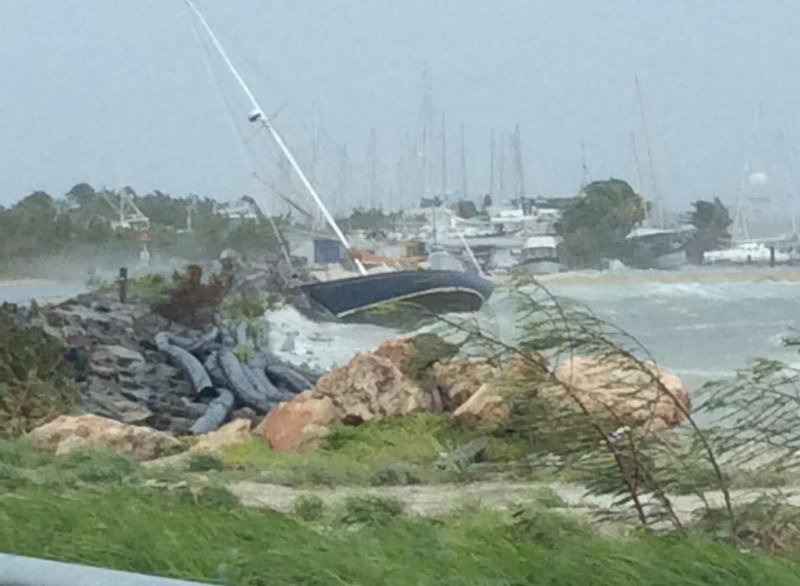
Although not on the island, St. Barth fountain-of-knowledge Melanie Smith reports that her sources on the island say "at least 50 boats sank or were driven ashore . . . all over the place. This storm grew so quickly while on the doorstep of the island that most were caught totally unprepared, which is pretty rare for St. Barth." According to Smith’s sources, as of Tuesday night three people on one boat were missing and several others still unaccounted for.
When hurricanes approach, most St. Barth boats run for the lagoon in St. Martin. But that’s 20+ miles away, the bridge only opens a couple of times a day, and the trip would have been to windward. So to our knowledge few if any skippers attempted it.
According to authorities at the Prefecture at St. Martin’s Grand Case, Gonzalo’s winds peaked at a relatively light 86 knots, about a third of the force of mega hurricane Luis, which so devastated these islands 19 years ago when more than 700 boats were destroyed in the lagoon alone. Surprise was Gonzalo’s big weapon. Most Caribbean hurricanes start far to the east and give a long warning of their approach. Gonzalo started as a system 700 miles east of Antigua, and on Friday afternoon forecasters said it had only a 10% chance of becoming a tropical storm in 48 hours, and only 30 percent in five days. That lulled a lot of people, most who have been through storms, into complacency.
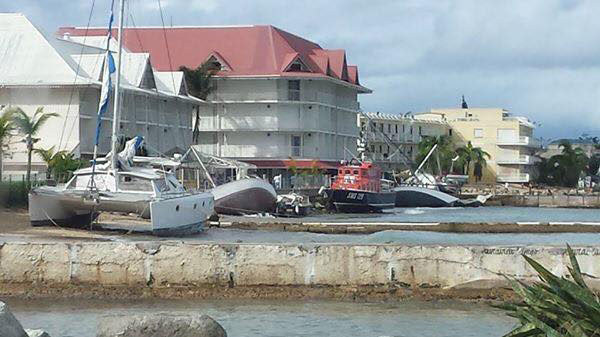
By Sunday afternoon Gonzalo had jumped to a depression and then a tropical storm, so at 1:30 p.m. authorities issued their first tropical storm watch. But at that point Gonzalo was supposed to pass to the south of the island. When a huge rainstorm came through on Monday, many residents assumed that it was Gonzalo coming and going. It wasn’t. In fact, the real thing had turned and was headed straight for the two islands.
The Sea Rescue service reported they were overwhelmed with calls for help, and that many flares were fired from boats in the night. Early in the storm Lifeboat 129 went to rescue a boat with two adults and a baby aboard off the Beach Plaza Hotel at Marigot Bay. "When we got the tow line to him, it took the man forever to attach it, as he was busy trying to save his anchor," said one of the crew. "We were shouting that we needed to go forward, and the wind was gusting to 60-65 knots. But we ended up with the line getting caught in the props and then the two engines shut off. Within ten seconds we were on the rocks."
Laura Greces of BVI Yacht Charters reports that Gonzalo was originally headed right for their base on Tortola, British Virgin Islands, so they made all preparations. "We were in line for a direct hit at hurricane force, so we ran all the boats over to our hurricane hole at Paraquita and to Village Cay, and had some put in the marina at Virgin Gorda. I had all the hurricane shutters up at my home and went to sleep at 8:30 pm. I woke up the next morning and I don’t think we even had tropical force winds. None of our boats, including Latitude‘s catamaran ‘ti Profligate, were damaged. We were very lucky. What are bookings like for the upcoming season? "Very, very busy."
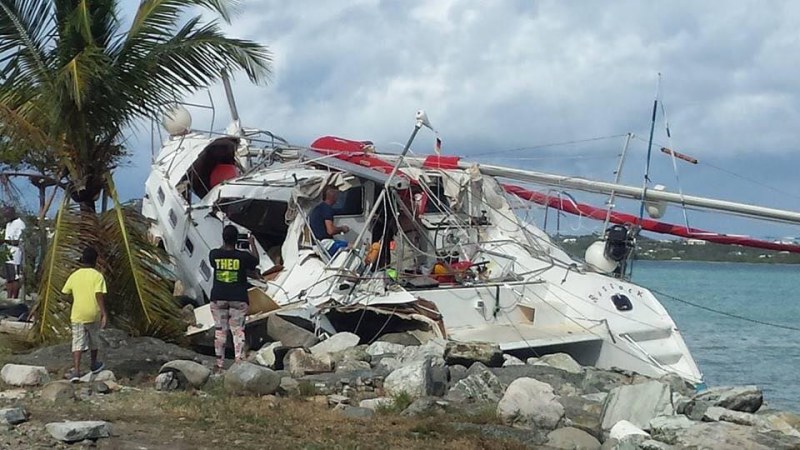
Compared to the 1990s, hurricanes during the last 15 years or so have been pretty easy on marine interests in the Eastern Caribbean, particularly the Virgin Islands / St. Martin / St. Barth / Antigua area of the Lesser Antilles. In just four hours, Gonzalo changed all that. Because the hurricane wasn’t that strong and didn’t last that long, most of the damage to the islands was cosmetic. Most electrical, phone, and transportation services, including airports, are up and running again. The islands will be fine for the winter.
